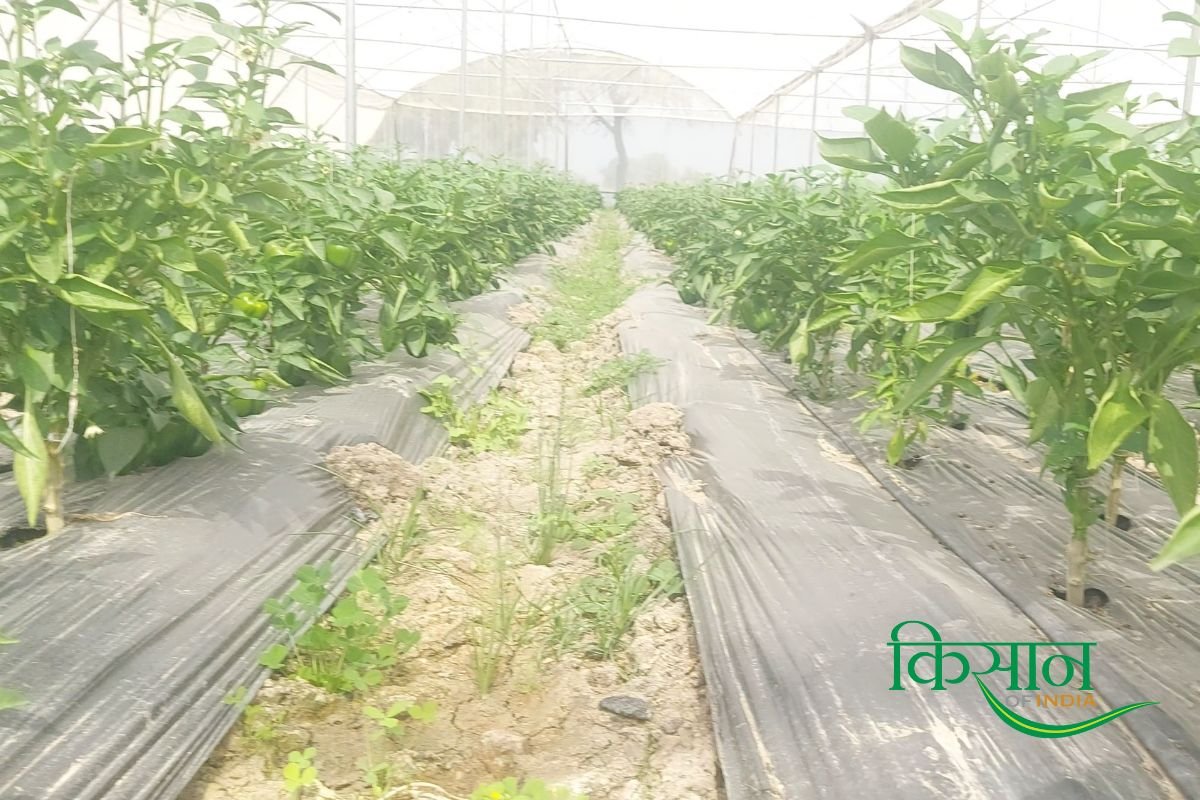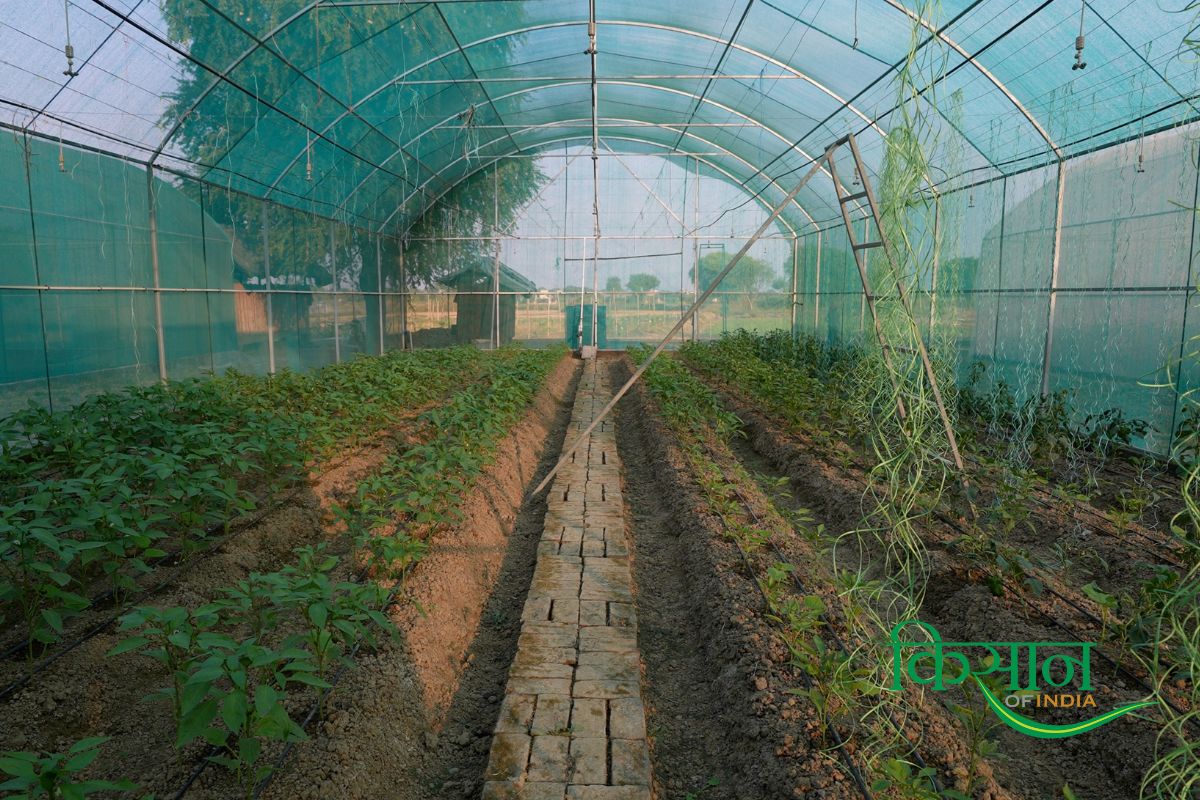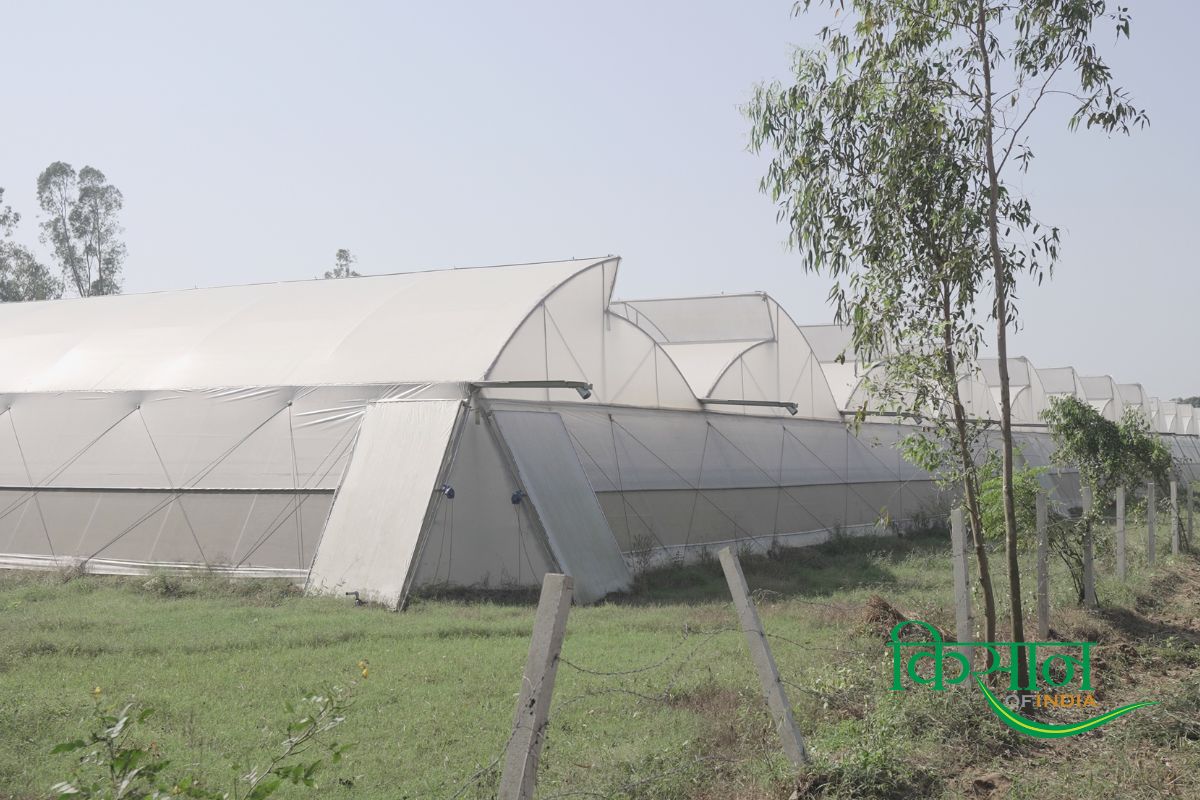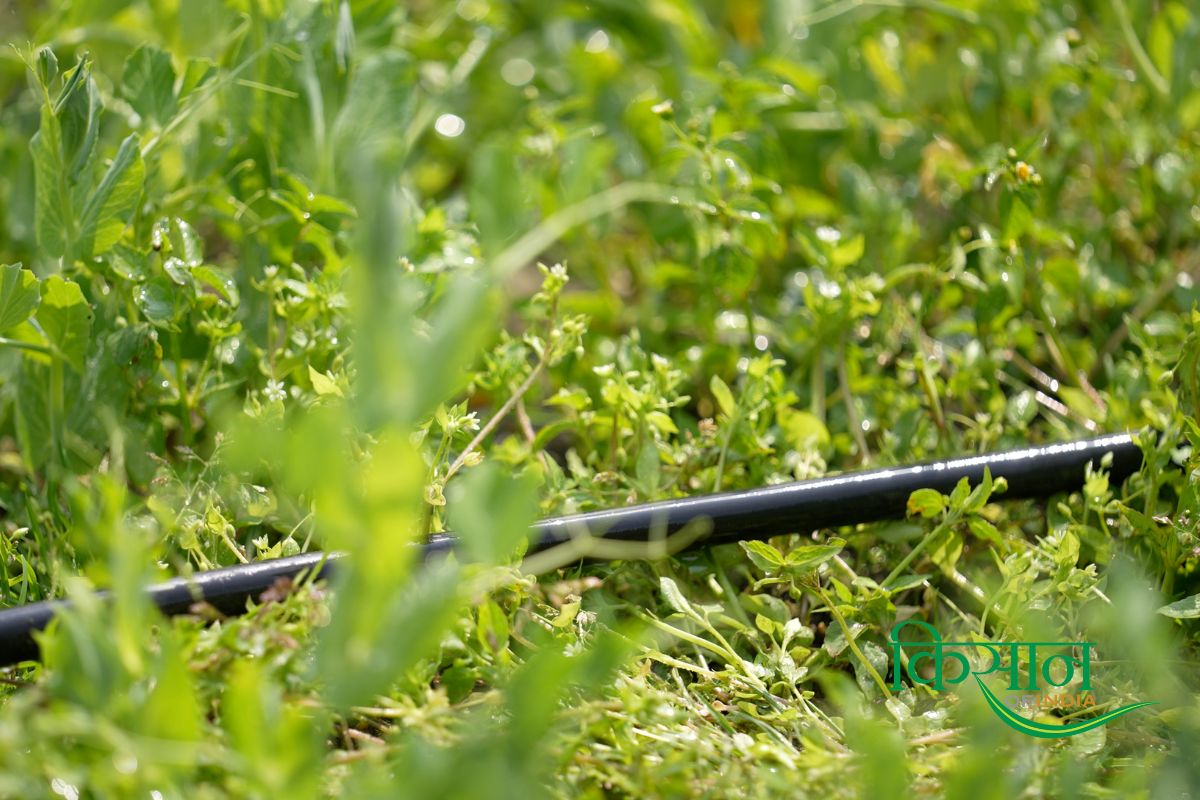Power Of Agro-Textiles Leading To A Sustainable Future
India is the world's largest producer of cotton and jute. India is also the world's second largest producer of silk. Other fibres produced in India include wool, and man-made fibres.
People have used textiles in agriculture for centuries, relying on them for crucial roles in food production and the fishing industry through products like nets, ropes, and lines. They have also used textiles to protect and cover crops in farmlands. So, the power of agro-textiles is enhancing agriculture towards a Sustainable Future.
What are Agro-Textiles?
Agro-textiles companies design a type of textile material specifically for use in agriculture. Farmers and horticulturists commonly use them to gain various benefits, such as protecting, supporting, and improving crop yields. Manufacturers make these textiles using high-quality materials and ensure they possess specific properties suitable for agricultural applications.
What Agro-Textiles We Grow In India?
India is a country with a rich agricultural history and is known for its diverse range of crops. The use of agro-textiles in India has gained popularity over the years due to their ability to enhance crop growth, protect crops from adverse weather conditions, and increase agricultural productivity. Let’s explore some of the agro-textiles that are grown in India.
Cotton:
People in India commonly grow cotton, making it one of the most commonly grown agro-textiles in the country. The Indian textile industry heavily relies on cotton, and various states cultivate it extensively. Cotton’s versatility is well-known, as it can be used for making textiles and producing oil and animal feed. The use of agro-textiles, such as mulching films made from biodegradable materials, has shown great promise in improving cotton crop growth, conserving water, and controlling weed growth.

Jute:
It is another important agro-textile grown in India. Known as the “golden fibre,” jute is primarily used for making ropes, sacks, and other packaging materials. With the increasing emphasis on sustainable practices, jute agro-textiles have gained popularity due to their eco-friendly nature. Jute geotextiles are used for erosion control, slope stabilization, and re-vegetation in various agricultural and civil engineering applications.
Coir:
Coconut husks derive it, and it is a widely used agro-textile in India. Coir possesses excellent moisture retention properties and serves as a soil amendment for improving soil structure and fertility. It also finds applications in manufacturing geotextiles and grow bags, which people use to cultivate plants in urban areas with limited space. Coir geotextiles prevent erosion, while coir grow bags facilitate indoor and rooftop gardening.
Sisal:
It is a durable and fibrous agro-textile grown in India. It is extensively used for making ropes, twines, and other agricultural accessories. Sisal fibres are also used to make geotextiles, which are used for weed control, erosion control, and soil stabilization in horticulture and landscaping applications.
Apart from these, other agro-textiles grown in India include flax, kenaf, and hemp. Flax fibres are used for making textiles and are known for their strength and moisture-wicking properties. Kenaf fibres are used for making ropes, twines, and paper products. Hemp fibres are used for making textiles, ropes, and other products.
Which state Is Famous For Agro-Textiles In India?
When it comes to agro-textiles, one state that stands out in India is Gujarat. Known for its rich agricultural heritage and textile industry, Gujarat has become a prominent hub for agro-textiles in the country.
Located in western India, Gujarat has a favourable climate that is conducive to a variety of crops. The state boasts an extensive network of irrigation facilities, making it an ideal location for agricultural activities. With a vast availability of raw materials, Gujarat has gained a reputation for its diverse range of textiles, including those specifically designed for agricultural purposes.
Gujarat’s agro textile industry has witnessed significant growth in recent years. The state has established numerous textile manufacturing units, specializing in agro-textiles. These units produce a wide range of products, including shade nets, insect nets, weed control fabrics, and mulching sheets.

The government of Gujarat has recognized the potential of the agro textile industry and has taken several initiatives to support its growth. It has provided incentives and subsidies to encourage investment in agro-textiles manufacturing units.
Additionally, the government has facilitated training programs and workshops to educate farmers about the benefits and uses of agro-textiles. This has enabled farmers in Gujarat to adopt advanced farming techniques and maximize their agricultural output.
Gujarat’s agro-textile industry has contributed to the state’s economy and has played a significant role in sustainable agriculture practices. Farmers can reduce their dependency on chemical pesticides and herbicides by using agro-textiles, leading to a healthier and safer environment.
Agro-Textiles: Revolutionizing Agriculture for A Sustainable Future
The agricultural industry in today’s world is facing the challenge of increasing productivity while minimizing the negative impact on the environment due to the looming concerns of climate change and sustainability. Agro-textiles is one emerging solution. These innovative materials are revolutionizing the way we approach agriculture, offering a range of benefits that can lead to a more sustainable future.
Protection From Weather
One of the primary advantages of agro-textiles is their ability to protect crops from adverse weather conditions. Extreme temperatures, heavy rainfall, and strong winds can all damage crops, leading to reduced yields or even crop failure. Agro-textiles act as shields, reducing the impact of these weather conditions and ensuring more stable and predictable crop growth. Moreover, farmers have more control over their agricultural production since they can customize the technology based on specific crop requirements.
Pests And Diseases
Another crucial benefit of using agro-textiles is their ability to control pests and diseases. Insect nets, for instance, prevent insects from reaching and damaging crops, reducing the need for chemical pesticides. This not only safeguards the health of the plants but also promotes biodiversity by minimizing the harm to beneficial insects.
Barrier Against Weeds
Additionally, agro-textiles can act as a barrier against weeds, reducing the need for herbicides and manual labor for weed control. By decreasing the reliance on harmful chemicals, agro-textiles contribute to healthier and more ecologically balanced agricultural systems.
Furthermore, agro-textiles have the potential to optimize water usage in agriculture. Farmers can control the amount of water that reaches crops using specialized fabrics like shade nets. These nets reduce evaporation and provide shade, minimizing the water requirements for irrigation. This helps conserve water, which is a precious resource, especially in regions with limited water availability.
Rural Development And Job Creation
The use of agro-textiles can also contribute to rural development and job creation. The production and installation of these materials require a skilled workforce, creating employment opportunities in rural areas. Agro-textiles also have a positive environmental impact. By reducing the need for chemical inputs, they contribute to soil health and biodiversity conservation. Agro-textiles can also help mitigate climate change by reducing greenhouse gas emissions.
Use Of The Latest Technology In Agro-Textiles In India
Agro textiles have revolutionized the agricultural industry in India with the use of the latest technology. These textiles, also known as agricultural textiles, are fabrics specifically designed for use in the agricultural sector to enhance crop production and protect crops from adverse weather conditions. The incorporation of advanced technology in these fabrics has significantly improved the efficiency and productivity of Indian farmers.
Nanotechnology
One of the latest technological advancements in agro-textiles is the use of nanotechnology. Nanotechnology involves manipulating materials at the nanoscale level, typically less than 100 nanometers in size. This technology has allowed the development of fabrics with improved properties such as increased strength, durability, and resistance to pests and diseases. Nanotechnology-enabled agro textiles have proven to be highly effective in preventing the transmission of harmful pathogens and pests, thus reducing the need for chemical pesticides and promoting sustainable farming practices.
Smart textiles
Another significant technological advancement in agro-textiles is the use of smart textiles. Smart textiles are fabrics that have embedded sensors, actuators, and other electronic components that can sense and respond to changes in their environment. In the agricultural sector, smart textiles are used for various applications such as soil moisture monitoring, temperature regulation, and crop protection. For example, sensors embedded in agro-textiles can monitor soil moisture levels and automatically trigger irrigation systems when necessary, ensuring optimal water usage and preventing water wastage.

3D Printing
Furthermore, the introduction of advanced manufacturing techniques such as 3D printing has also revolutionized the production of agro-textiles in India. 3D printing allows for the creation of intricate and customized designs, enabling the production of agro-textiles with specific features tailored to meet the requirements of different crops and farming practices. This has led to the development of highly efficient and cost-effective agro-textiles that can provide better crop protection and support, leading to increased yields and improved farm profitability.
Latest Technology
The use of the latest technology in agro-textiles has not only improved crop production and efficiency but also has environmental benefits. Reducing the use of chemical pesticides and fertilizers due to the enhanced protection provided by agro-textiles has resulted in less pollution of water bodies and soil. Additionally, the efficient use of water resources through the use of smart textiles has contributed to water conservation efforts, which are crucial in a country like India where water scarcity is a significant concern.
Challenges In Agro-Textiles Sector
There are some challenges. We need to address them. One of the main challenges is the accessibility and affordability of these advanced agro-textiles for small-scale farmers. While larger agricultural corporations may be able to invest in these technologies, it is essential to ensure that small farmers, who make up the majority of the farming community in India, can also benefit from them.
Another challenge is the need for proper training and education on the use and maintenance of these advanced textiles. Farmers need to understand how to effectively utilize and maintain the agro-textiles to maximize their benefits. Providing training programs and workshops on the proper use and maintenance of these textiles can help address this challenge and ensure that farmers can effectively integrate these technologies into their agricultural practices.
Additionally, there is a need for continuous research and development in the field of agro-textiles to further enhance their properties and functionalities. This research should focus on developing fabrics that are more heat and drought-resistant, as well as exploring the use of biodegradable and sustainable materials in the production of these textiles. Collaborations between research institutions, textile manufacturers, and agricultural experts can facilitate this research and contribute to the continuous improvement of agro-textiles in India.
What Are The Uses Of Textile In Agriculture?
People have been using textiles for centuries in various industries, and one of the lesser-known but highly valuable applications is using them in agriculture. The use of textiles in this field offers numerous benefits and plays a significant role in improving crop productivity, conserving natural resources, and promoting sustainable farming practices.
Geotextiles
One of the primary uses of textiles in agriculture is in the form of geotextiles. These are permeable fabrics that are predominantly made from synthetic fibres such as polyester or polypropylene. Geotextiles perform a crucial function in preventing soil erosion, stabilizing slopes, and reinforcing structures. When used in agriculture, they help to retain moisture in the soil by reducing water evaporation, thereby promoting healthy plant growth. Geotextiles also assist in weed control by acting as a physical barrier that prevents the growth and spread of unwanted plants.
Agro-textiles products
Furthermore, manufacturers use textiles in the production of agro-textiles, which encompass ground covers, mulch films, and crop support materials. Farmers place ground covers, also known as weed mats, on the soil surface to inhibit weed growth, preserve moisture, and regulate soil temperature. They spread mulch films, typically made from biodegradable materials, on the soil to decrease evaporation and erosion, manage weeds, and improve soil fertility.
Crop support materials, such as trellis netting or hail netting, help in the vertical growth and support of crops like vines or fruits, protecting them from damage caused by strong winds or heavy rainfall. These agro-textile products improve overall crop health, increase yield, and reduce the need for chemical interventions.
Creation of shade nets
Another important use of textiles in agriculture is in the creation of shade nets or shade cloths. People typically make these from high-density polyethylene (HDPE) and use them to provide protective shade for crops. Shade nets regulate the amount of sunlight that reaches the plants, preventing excessive heat and reducing water evaporation. This is particularly beneficial in regions with intense sunlight or extreme temperatures. By creating a microclimate around the plants, shade cloths optimize growing conditions, leading to improved crop quality and yield.
Irrigation system
Furthermore, the production of irrigation systems in agriculture utilizes textiles. For example, drip irrigation utilizes drip lines or tapes made of porous materials to deliver water directly to the plant’s root zone. These materials allow water to seep steadily and evenly into the soil, minimizing water wastage and ensuring efficient water distribution. This method of irrigation conserves water resources, reduces soil erosion, and prevents the formation of puddles or runoff that can lead to nutrient loss.

Sustainable Farming Practices
Textiles in agriculture not only have functional uses but also contribute to sustainable farming practices. They design many of these textile products to be reusable and durable, which reduces the need for frequent replacement. This helps minimize waste generation and aids in the long-term management of resources. Moreover, eco-friendly materials and production processes can manufacture textiles used in agriculture, further reducing the environmental impact.
Future Of Agro-Textiles
- The cultivation of agro-textiles in India not only contributes to the agricultural sector but also supports the growth of the textile industry.
- It provides employment opportunities for rural communities and promotes sustainable farming practices.
- The use of agro-textiles in India has gained international recognition, with exports to various countries.
- India is also investing in R&D to improve agro-textiles.
- India exports globally recognized agro-textiles to many countries.
- Efforts are being made to develop innovative agro-textiles. They can withstand extreme weather conditions, improve crop yield, and reduce the reliance on chemical pesticides and fertilizers.
- Furthermore, the government is providing support and incentives to farmers and manufacturers involved in agro textile production.
- This includes subsidies for the purchase of agro textile machinery and equipment, as well as loans and grants for research and development projects.
- Agro-textiles growth in India benefits not only the agricultural and textile industries but also the environment.
- These textiles contribute to sustainable farming practices by conserving water, reducing soil erosion, and promoting organic farming methods.
- They can reduce the agricultural sector’s carbon footprint by minimizing the use of synthetic materials and chemicals.
The progress of agro-textiles in India is diverse and widespread. Agro-textiles grown in the country include Cotton, jute, coir, sisal, flax, kenaf, and hemp. The use of these textiles has proven to be beneficial in enhancing crop growth, conserving resources, and promoting sustainable farming practices. With continued research and development, the Indian agro-textiles industry holds great potential for growth and innovation.
Contact us- If farmers want to share any valuable information or experiences related to farming, they can connect with us via phone or whatsApp at 9599273766 or you can write to us at “[email protected]”. Through Kisan of India, we will convey your message to the people, because we believe that if the farmers are advanced then the country is happy.



